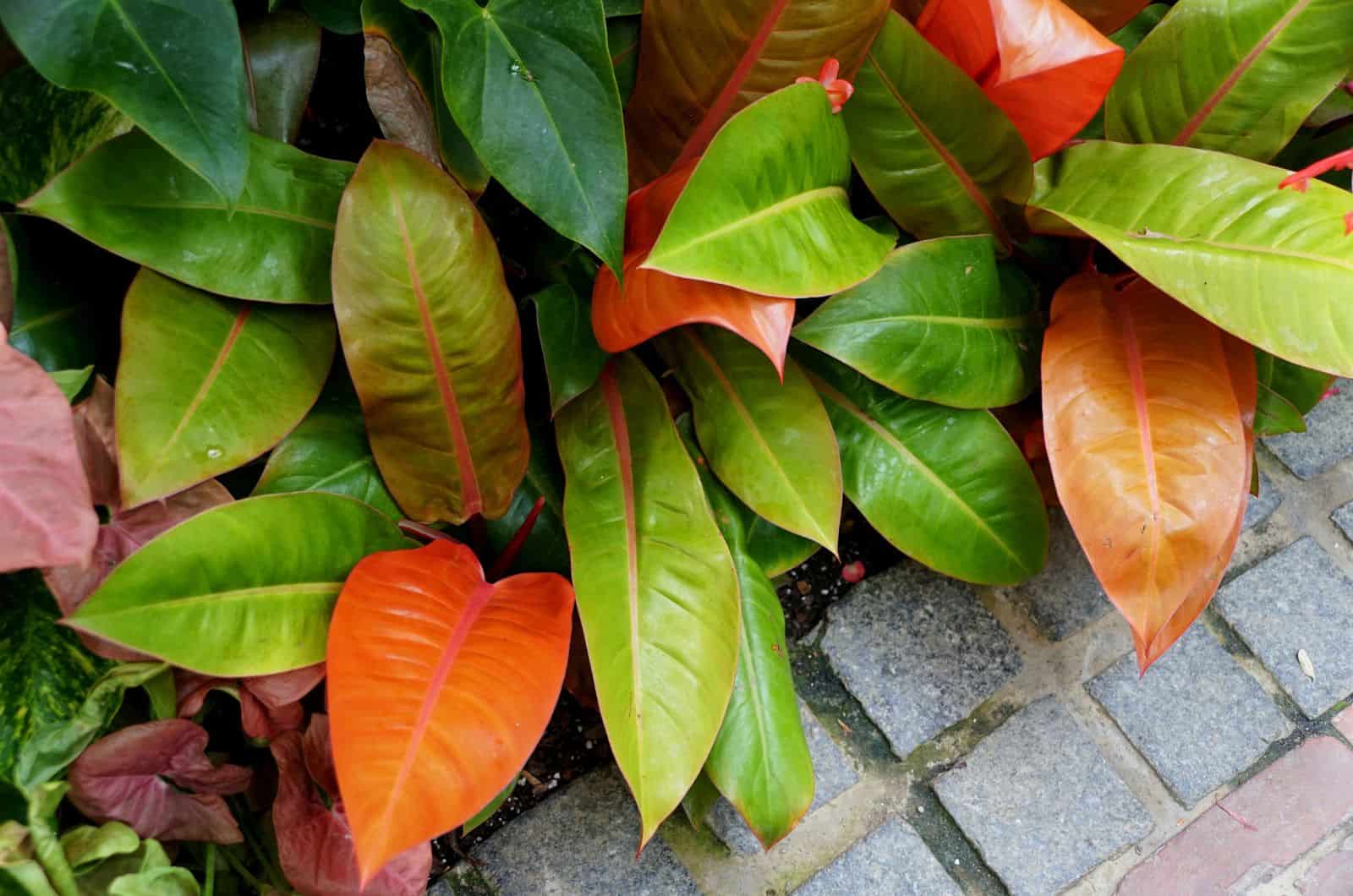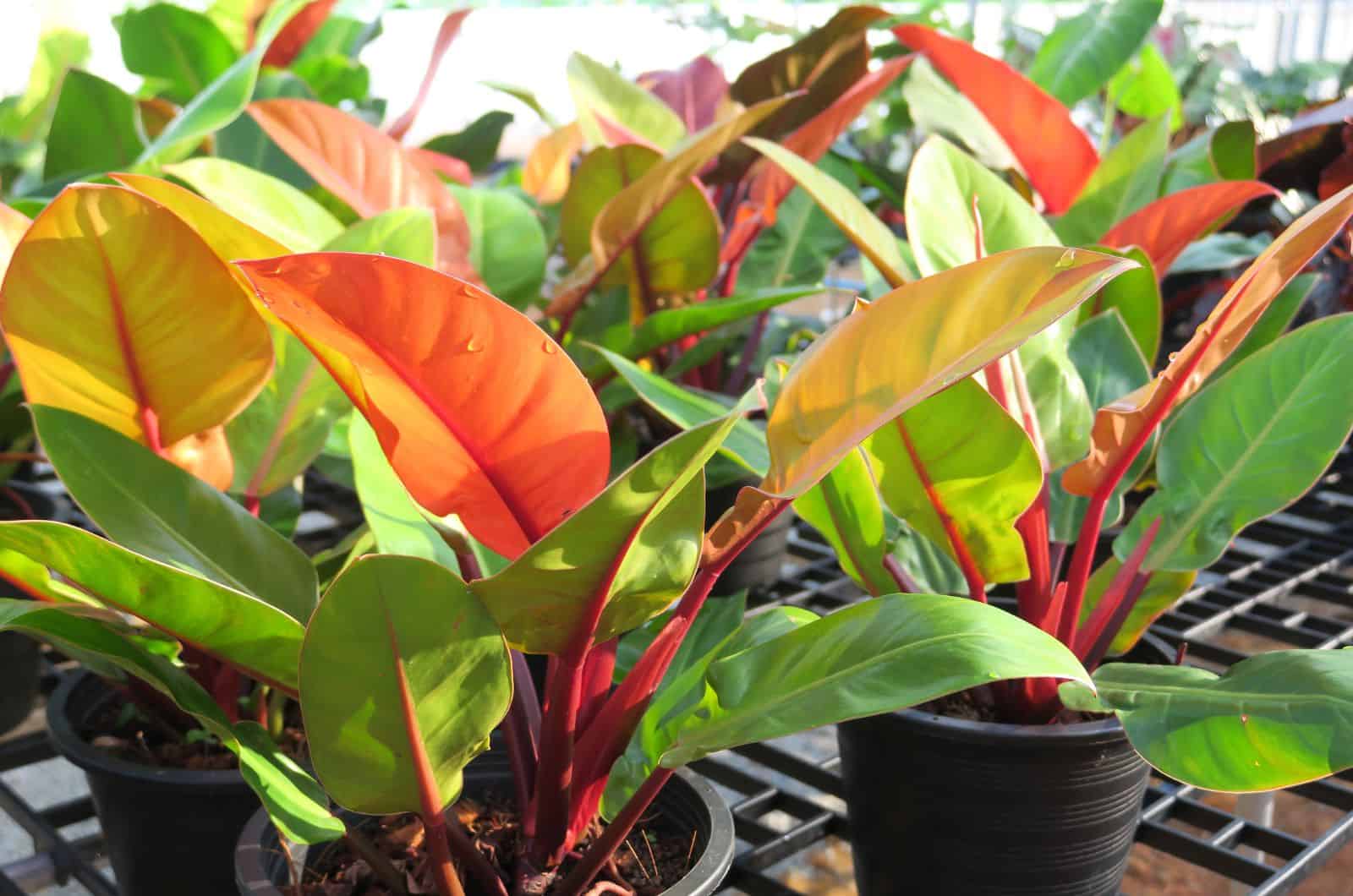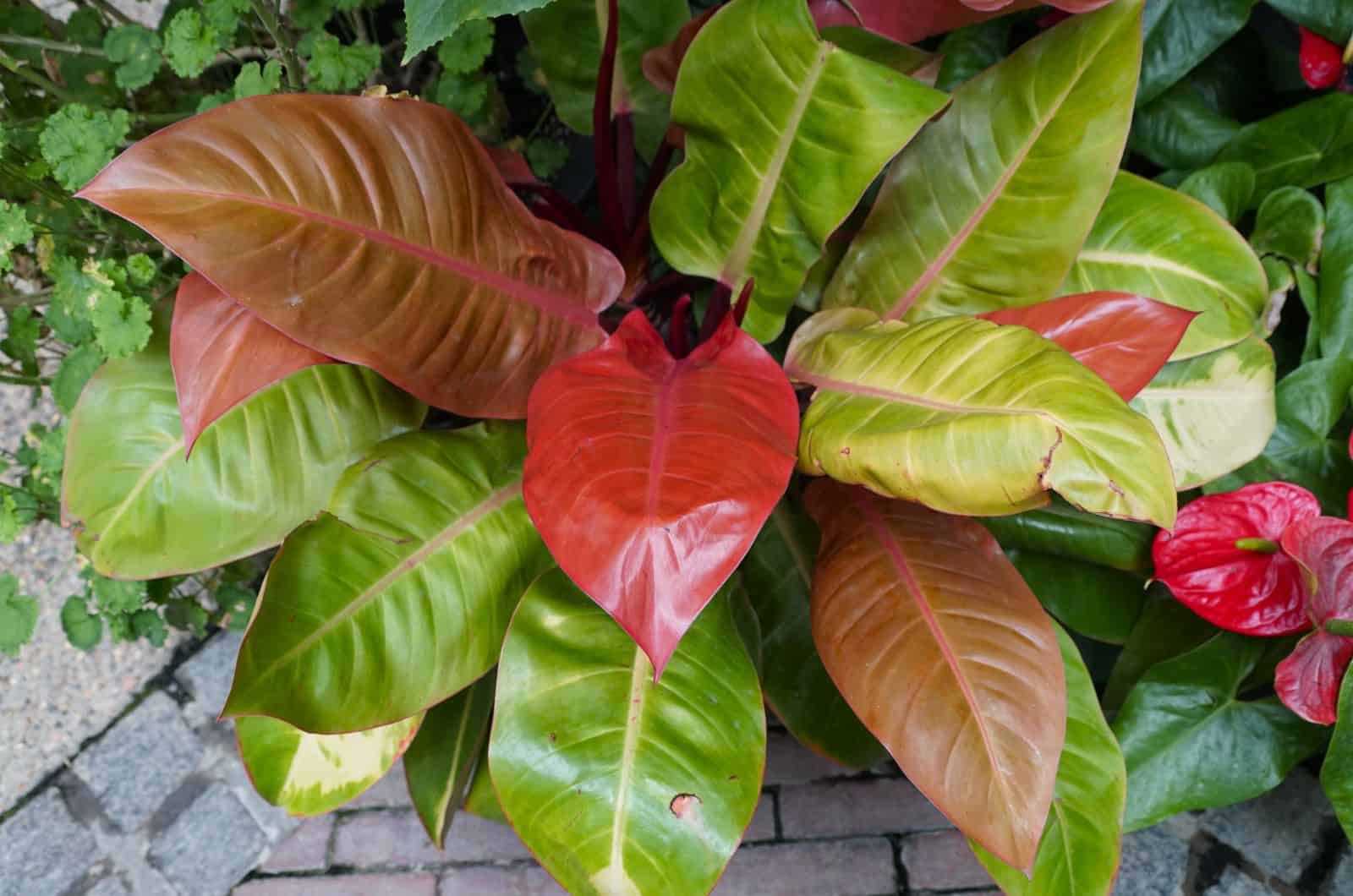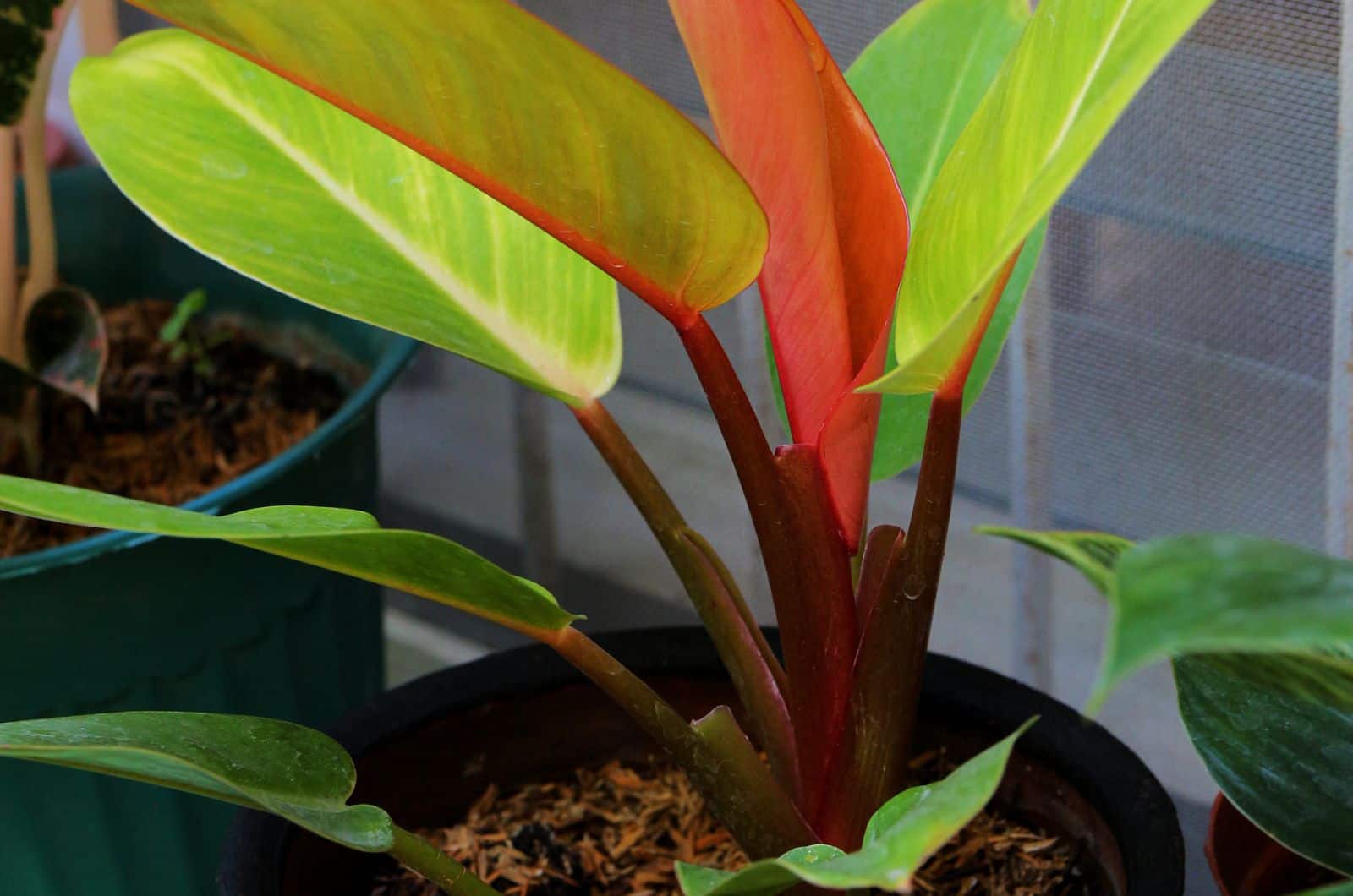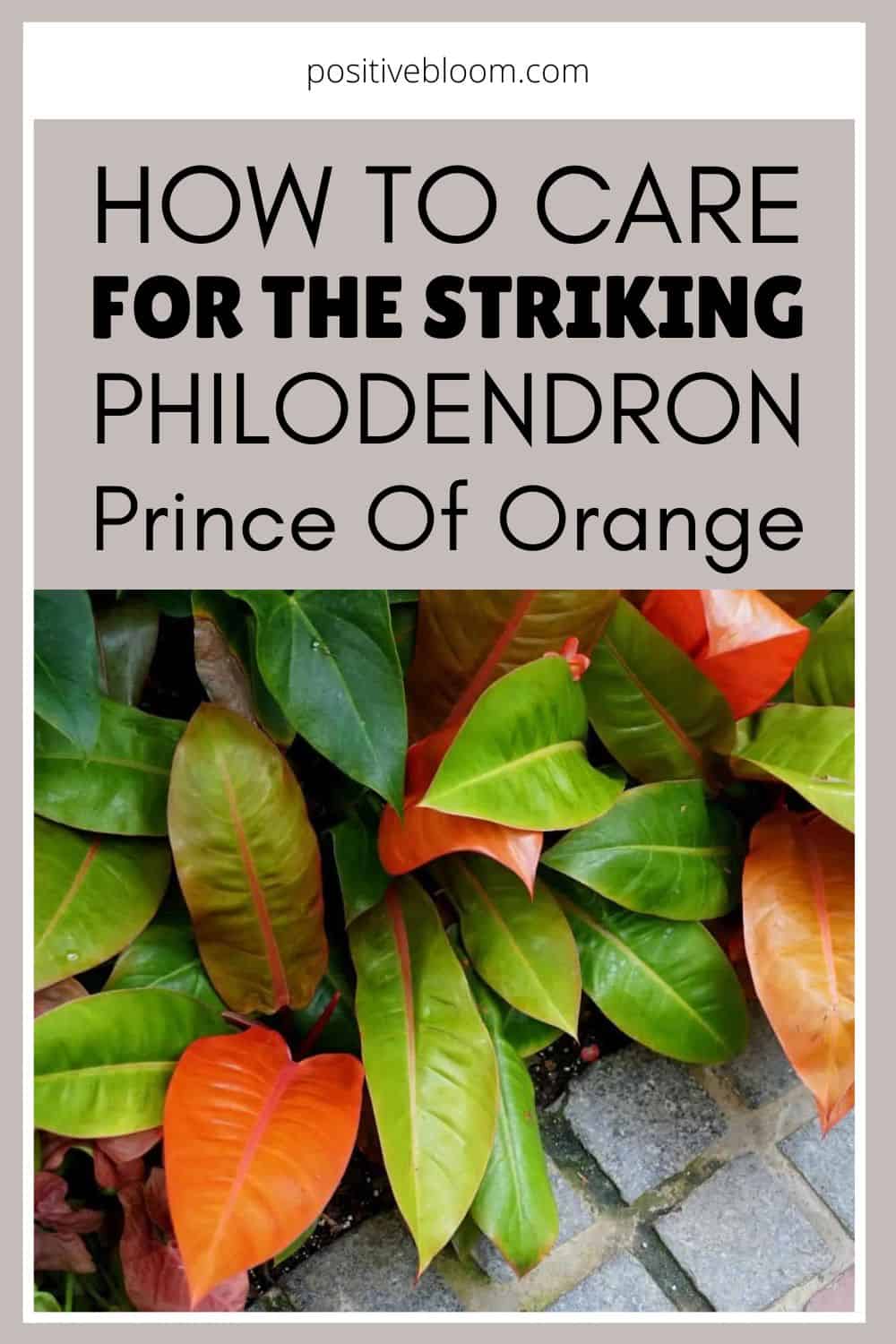There are a lot of Philodendron varieties grown all around the world. Some are rare, which makes them even more desirable.
Luckily, most varieties are no longer so rare because of different propagation methods. One such Philodendron is the breathtaking Philodendron Prince of Orange. This low-maintenance hybrid makes a perfect addition to any home.
Due to its unique appearance, this Philodendron perfectly fits its interesting name.
Let’s find out more about its features and care requirements, how to propagate it, and some common issues that may occur.
What Is The Philodendron Prince Of Orange?
This is a hybrid that doesn’t naturally grow in the wild. The parent plants of the Prince of Orange are native to the tropical parts of Central and South America.
The plant belongs to the Araceae family and is scientifically known as Philodendron erubescens Prince of Orange. It features long, oval, green leaves.
So, how come it’s called Prince of Orange if the leaves aren’t orange? The juvenile leaves are bright orange and then change to reddish-brown, before becoming green once the plant matures.
This Philodendron hybrid stands out because its large leaves grow from the center of the plant (self-heading). Other species from this genus grow leaves from vines or stems.
The Philodendron Prince of Orange grows fast and can reach up to 2 feet if grown in the right conditions.
Philodendron Prince Of Orange Care Guide
The Prince of Orange Philodendron is easy to maintain, which makes it a perfect houseplant for beginners. Let’s see what it needs to be happy and healthy!
How Much Light Does A Philodendron Prince Of Orange Need?
The parent plants of the Prince of Orange are native to rainforests. They aren’t exposed to direct sunlight in their natural environment. They receive indirect sunlight because the massive foliage of tall trees filters sunlight.
The Prince of Orange doesn’t like the direct sun; it will grow best if provided with bright indirect light. However, it can tolerate low light, so if you have a dark corner in your room where other houseplants don’t grow well, the Prince of Orange is perfect for the job.
Temperature & Humidity Requirements
The Philodendron Prince of Orange grows best at temperatures ranging from 65 to 80 degrees Fahrenheit.
Don’t let the temperatures drop below 55 degrees Fahrenheit or your Prince of Orange might die. This Philodendron plant is hardy in USDA hardiness zones 9 through 11.
The Prince of Orange’s parents are tropical plants that thrive in high humidity. Therefore, you’ll need to ensure high humidity levels for this Philodendron to thrive.
There are many options for raising humidity, but I recommend using a humidifier or grouping your plants. For instance, if you grow a Philodendron birkin, just place it next to your Prince of Orange.
Soil Requirements
Philodendron plant requires well-draining soil that’s rich in organic matter. All parts of the plant above the soil line receive nutrients from the soil, so make sure the potting mix is suitable.
It’s important to use a pot with drainage holes for your Philodendron Prince of Orange.
Mix peat moss with perlite or vermiculite, or purchase a ready made potting mix for African violets.
Watering And Fertilizing
The watering needs of the Prince of Orange depend on the soil type, temperatures, humidity, and light conditions.
A perfect watering schedule for the Prince of Orange involves watering it once the top inch of the soil dries out. Too much water in the soil will make your Philodendron more sensitive to root rot.
Overwatering can also cause leaf discoloration and stunt growth. You also need to be careful not to underwater your Prince of Orange. Underwatering causes Philodendron leaves to wilt, droop, or curl.
The Philodendron Prince of Orange isn’t a heavy feeder, but it will benefit from occasional fertilizing. You can add balanced houseplant fertilizer once a month during the growing season, just don’t forget to dilute it to half strength.
Repotting
I recommend repotting your Prince of Orange every spring. It’s a fast-growing plant, and even if it doesn’t overgrow the pot, it will benefit from the nutrients in fresh soil.
Take your Prince of Orange out of its pot, put some fresh potting mix in a slightly larger pot, and place your plant in it.
Water the plant and make sure it gets enough light.
Philodendron Prince Of Orange Plant Propagation
Growers love this Philodendron hybrid because it’s easy to propagate. You can choose between two plant propagation methods to get more Prince of Orange plants.
The first one is via stem cuttings. You need to cut a Philodendron stem with at least two nodes, and you can either propagate the cutting in water or plant it directly in the soil.
If you propagate in water, refresh the water in the jar every three days, and transplant the cutting once new growth occurs. Pay attention to the potting mix, and use our tips for soil type if you want new leaves to grow.
Another propagation technique you can use is air layering. When you notice aerial roots developing, make an incision below the node.
Wet some sphagnum moss, wrap it around the incision, and cover it with a plastic bag. You can expect new growth to appear after a couple of weeks.
Common Issues
The Philodendron Prince of Orange is not prone to many issues, which is another reason it’s a perfect plant for beginner growers.
Here is a list of common Prince of Orange plant problems that may occur, and how to fix them:
• Pests: Tiny creatures often inhabit indoor plants, including aphids, mealybugs, and fungus gnats. You can quickly eliminate these insects using insecticidal soap or neem oil.
• Yellow leaves: There are many reasons why light green Prince of Orange leaves turn yellow. The most common are direct sunlight and root rot due to overwatering.
The best idea would be to remove the yellow leaves using a disinfected pair of scissors. Pay more attention to plant care and ensure the best conditions.
• Brown leaf tips: The tips of Prince of Orange leaves may turn brown if the humidity is too low. The best idea would be to use a humidifier to raise the levels.
This Philodendron hybrid isn’t susceptible to diseases. Root rot is the most common, but it only occurs if we add too much water. Just pay attention to the watering schedule, and you won’t have these issues.
FAQs
Is The Philodendron Prince of Orange rare?
The Prince of Orange Philodendron was hard to find in the past and was once considered a rare Philodendron species. Its popularity has risen significantly, so it’s been more and more propagated and, therefore, easier to find.
Is The Philodendron Prince of Orange Toxic?
Yes, the Philodendron Prince of Orange is toxic, and that’s the only disadvantage of this houseplant. All parts of the Prince of Orange plant contain calcium oxalate crystals that may harm your pet or child if they consume it.
Wrapping Up
If you are looking for an unusual plant that will cheer up your plant collection with its colors, the Philodendron Prince of Orange is a perfect plant for you.
It is a Philodendron hybrid that’s easy to maintain, and any grower can get it to thrive. If you use our care tips, your Prince of Orange will be happy and healthy for many years to come.
Until next time!
Like this post? Share or pin it for later!


